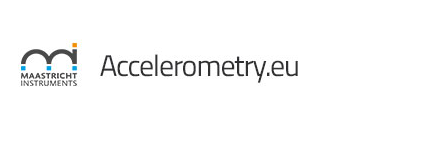Introduction
Dr. An Stevens, project manager at Maastricht Instruments, participated in a webinar from PHArA-ON on design and experiences in monitoring of physical activity.
The general objective of the PHArA-ON project is to support the aging of the European population by integrating digital services, devices, and tools in open platforms that can be easily implemented while maintaining the dignity of older adults and enhancing their independence, security, and capabilities. The project will use a range of digital tools including connected devices (e.g. Internet of Things, IoT), artificial intelligence, robotics, cloud and edge computing, smart wearable devices, big data, and smart analytics that will be integrated to provide personalized information and optimized healthcare delivery.
Dr. Stevens’ expertise is training people with chronic diseases and is working together with a team of research engineers on wearable sensors, health data, and sharing health data around Europe.
Sensors and algorithms
For monitoring activity, we need sensors. The sensors fetch raw data, and the algorithm adds filters to calculate heart rate or accelerometer data for step counts. There is no one-size-fits-all in algorithms. For example, commercially available devices focus on very dynamic and active young people. These devices are not designed for elderly physical activity, and do not work well for monitoring them. Dr. Stevens explained that a study was done, using the golden standard video analysis where steps are counted manually and compared with the output parameters of the commercial devices. The validity of these outcome parameters of commercial devices was poor. Dr. Stevens stresses to be critical of the algorithms used in the devices you are using during your study. By not measuring correctly, people can be demotivated to be physically active due to the feedback provided by the device.
User scenario & wireframes
After choosing the right device and the right algorithm. It is time to look at the user scenario. Where to place the sensor, how long to wear the sensor, how do I get feedback? You need to take account of both the user and the researcher’s requirements.
After choosing the scenario, wireframes are made to visualize the features and flow of the application. Aspects of usability and user interface come into play and must be tested thoroughly.
Dr. Stevens provides two physical activity app examples developed by Maastricht Instruments; Hospital Fit and MISS Activity. Hospital Fit is developed for hospitalized patients and has been built on the requirements phrased by clinical researchers and physiotherapists. It has a therapist and a patient login. The therapist can see the physical activity of the patient and give instructions based on the activity. The patient’s login provides feedback on physical activity, training videos, and suggestions from their therapist.
The MISS activity app is used in the pilot of PHARAoN and stands for Measure It Super Simple. Miss Activity measures how active people are, with no complex or bloated features. The MISS activity was designed especially for the elderly and by the elderly in a co-creation. The elderly are involved in all of the concepts; the sensor (hardware), the algorithm, user scenario , and wireframes. The key focus was that it was simple to manage.
Technology Readiness Levels
Dr. Stevens also underlines the importance of Technology Readiness Levels that are key in software and hardware development. The TRL consists of multiple phases during development.
- TRL 1: Conceptual ideas
- TRL 2: Technological proof-of-concept
- TRL 3: Experimental validation
- TRL 4: Prototype development
- TRL 5: Prototype validation in lab environment
- TRL 6: Prototype demonstration in pilot study
- TRL 7: Design for production
- TRL 8: Product validation and certification
- TRL 9: Certified, validated, production-ready design
Avoid feature creep
Avoiding feature creep is one of the main points in development, according to Dr. Stevens. Stick to your [measuring] goals to simplify the development process and end product. Every new feature must be validated, and this will take time and therefore costs.
Watch Dr. An Stevens provide more examples of User scenario’s, wireframes and data flow here:
